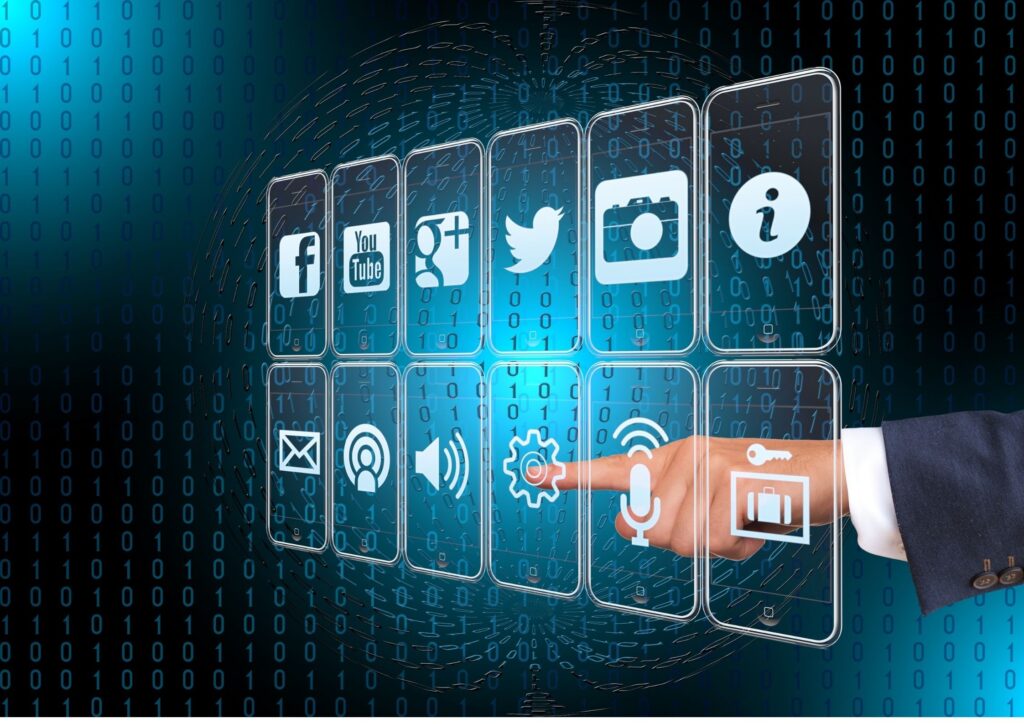A sudden outburst of a pandemic and we find ourselves trapped in the world of video-calling interface working on our digital confidence. It was the time like no other, the year 2020 was all about the cyberspace and the virtual interactions….. to be continued in 2021….
The unprecedented explosion of digitisation in these uncertain times has a global impact on economies, social spaces and behaviours. Thus, a convergence of digital and physical space is very much visible to all of us. With this radical shift remote conferencing has become the medium and all human interactions take place online. We have entered a digital arena to talk and express ourselves. So is that enough? Are we comfortable in this new space? Or are we just going with the flow? I think a short reflection is a need of the hour.
As a part of virtual events team I tried to analyse the digital challenges that the online space throws at its users. It’s an effort to decode the hidden gaps as socializing seems like a challenge on the social networking platforms. Are we experiencing virtual hesitation, shyness, anxiety, social phobia, fatigue or fear? Do we need to build or boost our digital confidence?

I believe that a mix of those factors can undermine the digital confidence of people attending virtual events and limit their willingness or capacity to engage with others. Maybe some are too shy to speak in front of a camera or to take the microphone. Others could be intimidated by “high profile” speakers, experts or peers in the audience, and that could stop them from sharing their views, opinions or asking questions even in a written way. Nowadays, many events offer simultaneous interpretation (we did in every ICSW/virtual event), but if it is not provided, attendees who do not feel confident communicating in the main language of the event may choose not to engage, not even writing comments or questions.
Why you loose on the digital confidence?
Initially with the outbreak of the COVID19 crisis people participation was on all time high but slowly gradually the downfall in participation was observed. With my Anthropological lens I tried to analyse the hidden reasons leading to this dwindling response in the webinars and online meetings.
Various factors that build up the situation of helplessness and nervousness are –
Speaking Anxiety or Social Anxiety
Shyness to speak
Intimidating speakers/audience
Camera Shyness
The role of devices
To some extent it is the social anxiety which induces the idea of being judged by other attendees with a negative evaluation. Not only this the camera shyness is also a major factor when other subject experts are there to listen to you which becomes quite intimidating.
Of course, low levels of engagement could be influenced by other elements not linked to digital confidence. Maybe the event is just not engaging. Attendees may be multitasking or have a poor internet connection that limits their interaction. The kind of device used to join an online event also plays a critical role in increasing the attention span and lowering participation.
How to build this confidence?
We are in middle of a pandemic but at the same time it’s an opportunity to find our inner strength and look for ways to help each other in a best possible manner. It’s time to grow together with positive thoughts like never before. Online communication is definitely an unusual experience for many people which undoubtedly creates an awkward environment and people tend to participate less in the whole process. Some tips –
Breathing exercises are a great way to calm down and start with a lot of energy and patience.
Practicing before the online conference is always a good idea as it gives you a sense of confidence to speak in front of your audience.
Preparedness should be around the topic of discussion that you wish to attend or that you are going to present. It boosts the confidence.
Feel good and confident it’s not about how you look but how good you feel about yourself, your work and your knowledge & skills. Remember self-Confidence is the key.
Strategize the Webinar Outreach
Determine the Target Audience – borrowing some ideas from the world of marketing is always a good 360 degree communication approach. Identifying listeners/audience who is interested in the topic and would add value to the discussion will give a more engaging and interactive online experience. It’s like serving the product to the right set of customers!
Social Media Strategy – networking platforms like Facebook, Twitter, Linkedin, Instagram and You Tube worked as a major source of communication for the organisations during the pandemic. Exploring these mediums to their full potential will definitely yield more results in terms of the outreach and engagements.
Content is the king – it’s not about too much or too less but what and what not? Digital fatigue is slowly grappling our audiences which means more qualitative and focused content. At the same time content which is not heavy on our souls and is intelligible. Curate an experiential virtual event to have more practical outputs.
Moderator rules the show – A good moderatorknows how to connect with the audience and curate a balanced discussion. He/she is the one who holds the show thus making the virtual stage bit informal might pave the way towards a more people centric conversations.
Online communication is here to stay. That means that we need to pay more attention to digital confidence and to any other digital challenges and gaps that reduce the meaningful engagement of participants in online meetings and events.
Written by
Richa Sharma

offdhook.com

